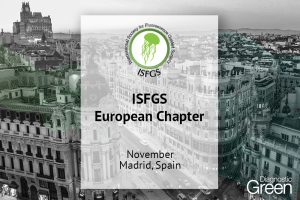Immediate post-mastectomy breast reconstruction offers benefits; however, complications can compromise outcomes. Intraoperative indocyanine green fluorescence angiography (ICGFA) may mitigate perfusion-related complications (PRC); however, its interpretation remains subjective. Here, we examine and develop methods for ICGFA quantification, including machine learning (ML) algorithms for complication prediction. ICGFA video recordings of flap perfusion from a previous study of patients undergoing nipple sparing mastectomy (NSM) with either immediate or staged immediate (delayed by a week due to perfusion insufficiency) reconstructions were analysed. Fluorescence intensity time series data were extracted, and perfusion parameters interrogated for overall/regional associations with postoperative PRC.
The analysable video dataset of 157 ICGFA featured females (average age 48 years) having oncological/risk reducing NSM with either immediate (n=90) or staged immediate (n=26) reconstruction. For those delayed, peak brightness at initial ICGFA was lower (p<0.001) and significantly improved (both quicker-onset and brighter p=0.001) one week later. Overall PRC rate in reconstructed patients (n=116) was 11.2% with such patients demonstrating significantly dimmer (p=0.018) and slower-onset (p=0.039) fluorescent peaks with shallower slopes (p=0.012) than uncomplicated patients with ICGFA, especially dimmer centrally (p=0.03) and medially (p=0.04). Importantly, such relevant parameters were converted into a whole field of view heatmap potentially suitable for intraoperative display. ML predicted PRC with 84.6% sensitivity and 76.9% specificity. Conclusion Whole breast quantitative ICGFA assessment reveals statistical associations with PRC that are potentially exploitable via ML.
https://www.sciencedirect.com/science/article/pii/S2352587824000135




